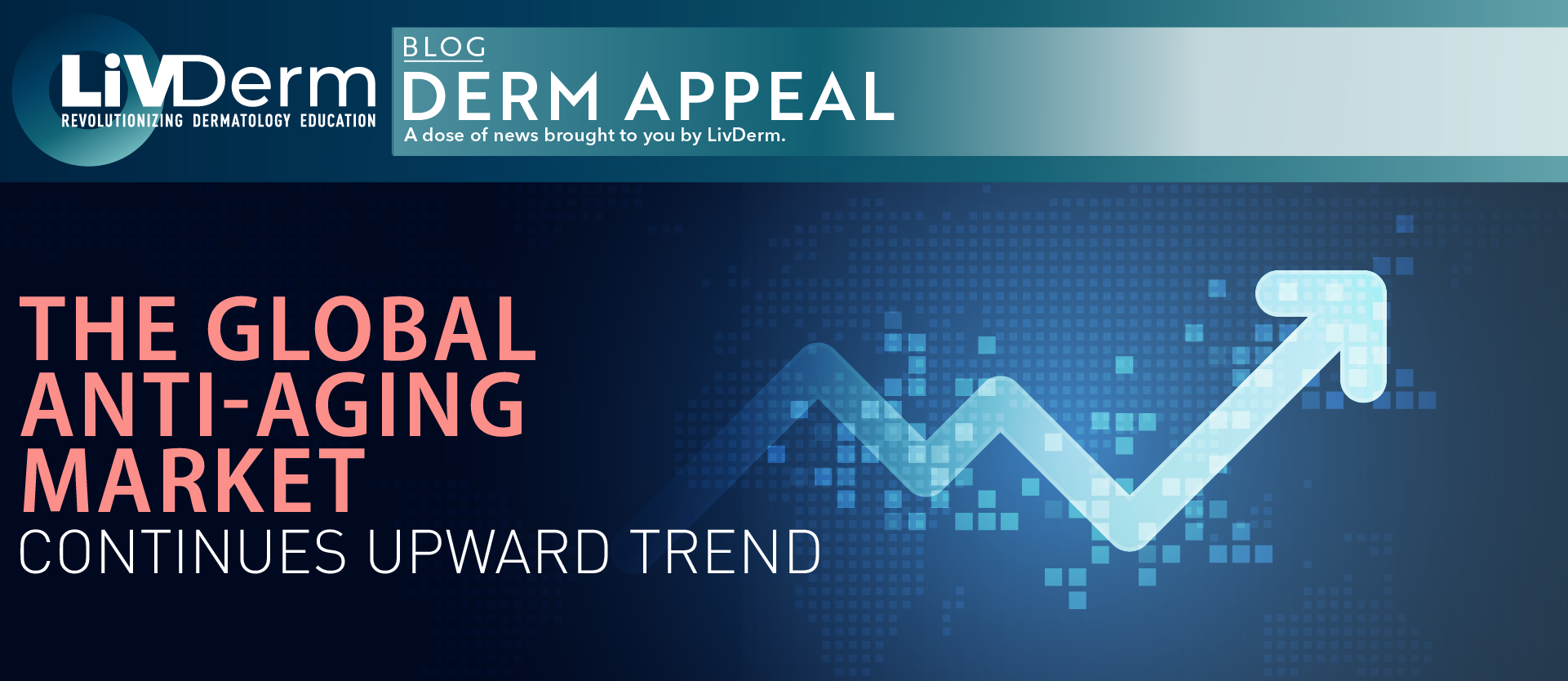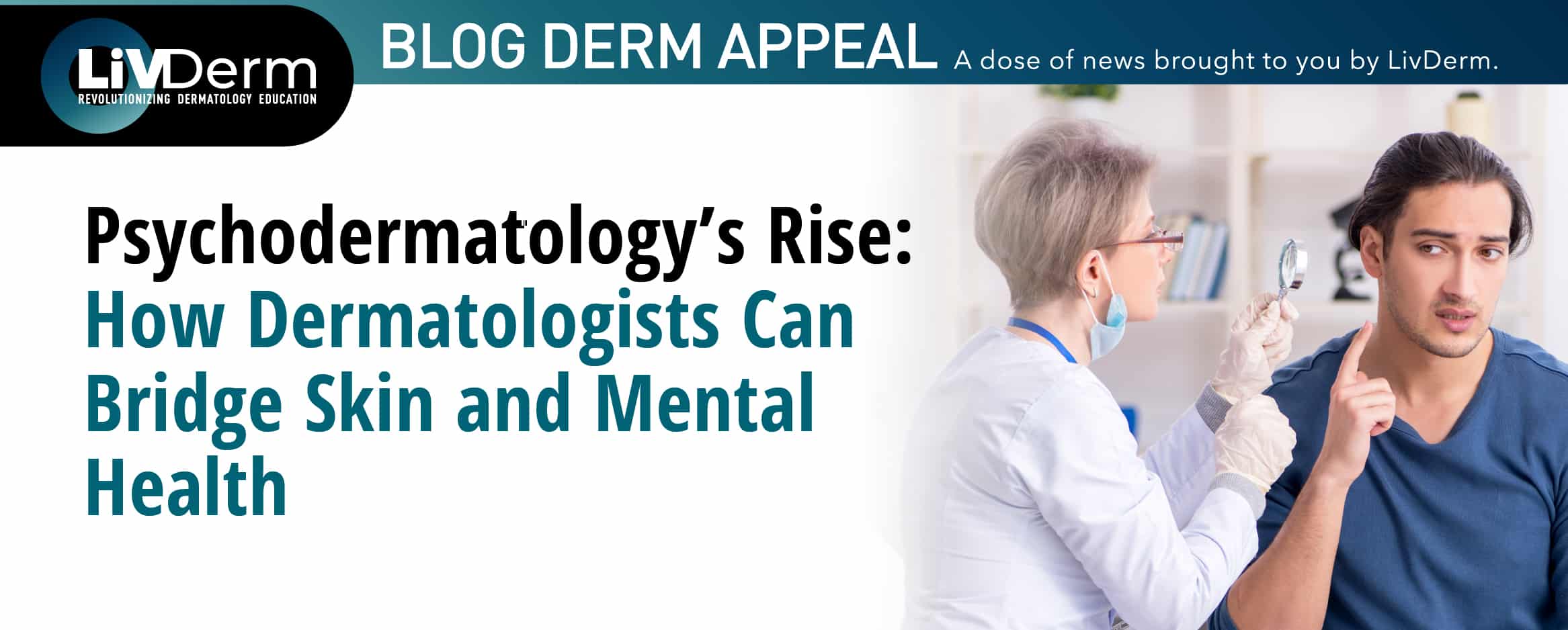With manufacturing plant shutdowns, the delay or cancellation of elective procedures, and other supply chain hindrances, the global anti-aging market has witnessed subdued growth due to the COVID-19 crisis. In the beginning of the pandemic, individuals were primarily purchasing essential goods, reducing the demand for anti-aging products and treatments. However, months into the current health emergency, many have been diverting their disposable income toward spending in the aesthetic medicine sector.
Already dramatically rising in value over the course of the past few years, the global anti-aging market is forecasted to surpass $421.4 billion in revenue by 2030 with a compound annual growth rate of 8.1%, per data from a report by P&S Intelligence. Additionally, the 2019 World Population Aging report published by the United Nations projects the population of people aged 65 and above will increase to 1.5 billion in 2050; this demographic is one of the main driving factors of the anti-aging market.
Movement in Anti-Aging Market Sectors
The P&S report forecasts multiple categories to continue an upward trend in the anti-aging market. In 2018, the American Society of Plastic Surgeons (ASPS) reported over 17.7 million surgical and minimally invasive cosmetic procedures were conducted in the United States. This number has been continuing to rise steadily over the past 5 years with leading procedures including breast augmentation, liposuction, rhinoplasty, and eyelid surgery.
In 2019, the anti-wrinkle sector generated the highest revenue within the anti-aging market. Dermal fillers are projected to exhibit a faster growth rate than botulinum toxin in the upcoming decade as their use becomes increasingly common and access to injections becomes wider.
Hair restoration treatments are projected to retain their market dominance during the forecast period with an increasing number of hair transplant surgeries and a growing senior population across the globe as the key driving factors.
Skincare products are also experiencing a boom as a result of heightened hygiene awareness and increased time spent at home. In addition, face mask and facial covering mandates across the globe are likely to spur new product development to soothe irritated skin and treatments for mask-related skin concerns.
Research by the agency Mintel reports a 5% spike in sales of facial cleansing wash between 2019 and 2020; there has also been an increased use of micellar water, moisturizers, toner, and usage of night cream during this period. Sales of face masks, day creams, moisturizing lotions, peel-off masks are surging as well.
Demographic Distinctions
Demographics influencing market growth now and in the future are generations X and Y. Generation X previously dominated the market in 2018 and is projected to advance at the fastest pace within the anti-aging market by demography. This group is expected to remain as the largest consumer of anti-aging products in terms of revenue contribution due to a growing awareness of cosmetic procedures and focus on aesthetic appearance. Generation X is more likely to opt for anti-aging treatments with the help of increased disposable income.
On the other hand, the market position of generation Y – comprised primarily of millennial consumers – is estimated to grow over the next decade with high awareness of and preference for popular premium luxury brands.
Geographical Dominance
Rising cosmetic surgery volumes in North America make it the highest revenue contributor to the market. Along with a growing geriatric population, the increasing popularity of non-surgical cosmetic procedures, sales of at-home anti-aging products, and the introduction of new anti-aging products will contribute to further market growth in the region, including novel medical devices for at-home use.
Meanwhile, the Asia-Pacific market is forecasted to witness the fastest industry growth in the next decade due to a rising elderly population, cosmetic surgery volumes, and growing awareness of various products, procedures, and treatments that are available.
Market Leaders
Currently, the most significant players in the global anti-aging market are: Allergan, Candela Corporation, Hologic, Lumenis, and Alma Lasers. These and other anti-aging companies are increasingly engaging in partnerships to further expand their geographical presence, distribute luxury cosmetic products, and gain new marketing channels to commercialize their offering in new regions.
Upward trends across sectors and positive movement in the anti-aging market will contribute to tremendous future growth. Although the COVID-19 crisis may have initially hindered patient interactions and diminished volumes of procedures, the backlog of demand alongside an increasing awareness and consciousness of one’s physical appearance will drive further market growth.
Aesthetic medicine professionals can expect a continuous increase in demand for cosmetic procedures and surgeries, while manufacturers of products and devices are likely to witness a similar surge with a shifting focus on at-home treatments and devices as well as a wide variety of anti-aging skincare products. To expertly prepare clinicians to meet the industry’s evolving demands and equip them with the latest advanced dermatology education, our 19th Annual South Beach Symposium event will offer an in-depth anti-aging workshop – Track 2: Anti-Aging & the Dermatologist – taking place on Saturday February 6, 2021.
















